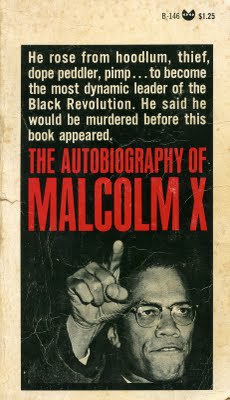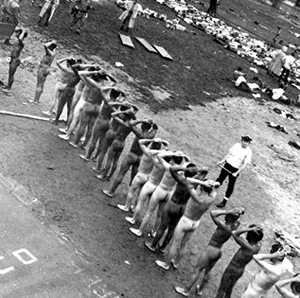The Voting Rights Act (VRA) signed into law by President Lyndon Johnson in 1965 struck down laws supporting Jim Crow segregation and other measures designed to disenfranchise or disempower black voters. When Congress enacted the law in 1965, it determined that racial discrimination in voting was prevalent in certain areas of the country, particularly in the South. It has been renewed four times. In 2006, Congress voted overwhelmingly to reauthorize Section 5 for another twenty-five years. The vote was 390-33 in the House and 98-0 in the Senate.
Opponents of the Act say it’s outdated and no longer necessary. That it infringes upon states’ rights or sovereignty, and the South is being unfairly punished for racial discrimination that no longer exists. They argue that the country now has over 10,500 black elected officials including the president and is in effect – “post-racial” in voting practices.
The case that has the VRA in jeopardy is Shelby County, Alabama v. Holder. Shelby County, a predominately white suburb of Birmingham, wants the Supreme Court to declare a part of Section 4 and Section 5 of Act unconstitutional. The Court began hearing the case in March of this year. They will rule on whether Congress’ decision in 2006 to reauthorize Section 5 under the pre-existing coverage formula of Section 4 of the Voting Rights Act exceeded its authority under the 14th and 15th Amendments and thus violated the 10th Amendment and Article IV of the Constitution.
Shelby County attorneys argue, “The violence, intimidation and subterfuge that led Congress to pass Section 5 and this court to uphold it no longer remains.” “The children of today’s Alabama are not racist and neither is their government,” wrote Alabama Attorney General Luther Strange in USA Today.
Alabama has several supporters of its outlook on the high court. In 2009, Chief Justice John Roberts said, “Things have changed in the South.” He wrote: “The evil that Section 5 is meant to address may no longer be concentrated in the jurisdictions singled out for pre-clearance. The statute’s coverage formula is based on data that is now more than 35 years old, and there is considerable evidence that it fails to account for current political conditions.” In opening oral arguments on the Shelby County case Justice Antonin Scalia called the Act a “perpetuation of racial entitlement.”
Yet the law’s intent is to protect against the entitlement of primarily white men calling the shots and legislatively protecting the unchecked ability to so. It’s about a fair playing field and making sure biased, bigoted or prejudiced lawmakers are not able to fix the rules to empower their group over others.
Make no mistake about it – the fight over the VRA is about “power, access to power and representative.” It’s about who makes the rules as to who can vote, when and where they vote and who and what they can vote for. It is a fight about turnout – limiting some, enhancing others. As civil rights attorney John Brittain puts: “It’s a fight over a defensive procedural tactic that puts the burden on jurisdictions to prove it is not their intent to discriminate.”
Here’s a quick overview of the VRA:
- Section 2 prohibits voting discrimination, and any voting practice or procedure that has a discriminatory result. It prohibits drawing election districts that improperly dilute minorities’ voting power. This section is permanent and does not require renewal.
- Section 3 is how jurisdiction come to fall under or “bail in” to federal scrutiny. It’s the process by which jurisdictions found to have a ‘pocket’ of discrimination may be required to seek pre-clearance under Section 5. Section 4 provides a formula to identify those areas and sets remedies. The jurisdictions covered under the Act include Alabama, Alaska, Arizona, Georgia, Louisiana, Mississippi, South Carolina and most counties in Texas and Virginia. Jurisdictions in California, Florida, New Hampshire, North Carolina, South Dakota, Michigan and sections of New York City are also covered under the Act.
- Section 4 also guarantees the right to register and vote to those with limited English proficiency. It also addresses the ability of members of language minority groups to get information about the electoral process.
- Additionally, Section 4 provides “bailout” from coverage under the Act. To qualify a jurisdiction must show that for the past ten years, it has not violated the Act. Exceptions may be made for small, immediately corrected violations. The bailout applicant must show that it has worked to eliminate discriminatory voting practices and it has improved minority access to the electoral process.
- Section 5, or “pre-clearance” – the “heart of the VRA,” requires that areas of the country with a history of voter suppression and intimidation determined by Section 4 – must submit any changes in their election laws or attempt to change “any voting qualification or prerequisite to voting, or standard, practice, or procedure with respect to voting…” in any “covered jurisdiction to the Department of Justice or a three-judge panel of the District Court of the District of Columbia for approval.
VRA supporters oppose shifting the “burden of proof” to the people or “plaintiffs” as opposed to those covered jurisdictions that have shown time and again they will try to slip something unsavory and unfair pass the people.
If opponents of the Act have their way, plaintiffs – be they private citizens or the United States Department of Justice, will have the burden of proving intent (to discriminate) which for a private citizen will be both costly and discouraging in most cases.
Conservative “post-racialists” pretend that colorblindness is now the order of the day. Yet in 2011 and 2012, 19 states passed more than two-dozen measures that would have made it harder to vote. The Brennan Center for Justice called these schemes “the biggest rollback in voting rights since the Jim Crow era.” Those measures included voter ID laws, – which some argue, are the “modern day equivalent of poll taxes,” early-voting cutbacks, and curbs on community-based voter registration drives – all of which disproportionately impacted minority and Democratic Party voters. Moreover, in the last decade or so, lawmakers have broken up majority-minority districts with questionable redistricting practices. African-American and Latino voters’ names are routinely purged from voter lists under the pretext that “election officials were cleaning them up.” There’s also been attempts to suppress voting (mostly Democratic) in states like Ohio and Florida that played politics with voting hours in predominately minority precincts.
Most of the states passing restrictive voter ID laws are in the south and covered under Section 5 pre-clearance coverage. They include states like Texas, South Carolina, Virginia, and Florida in the South, and Pennsylvania and Wisconsin in the North, just to name a few. Voter ID laws in Texas, South Carolina and Wisconsin were suppressed by the courts prior to the 2012 elections. A DOJ ruling on the S.C. case, prior to the election, led to a federal court ruling that upheld a modified version of the law. It goes into effect in 2013. Moreover, in Texas a federal court recently refused to pre-clear the state legislature’s redistricting plan, finding “the new lines intentionally discriminated against minorities.” Because of Section 5, Texas was blocked from racial gerrymandering.
Back in June 2012, in the midst of a Presidential election year, Pennsylvania Republican House Majority Leader Mike Turzai let the “cat out of the bag” when he said at a Republican State Committee meeting that the voter ID law was “going to allow Governor (Mitt) Romney to win the state of Pennsylvania.” A state judge blocked Pennsylvania from requiring voters to show photo identification in the November ’12 election but also ruled it could be implemented for future elections.
But don’t think its just Republicans who try to get around the Act. Southern Democrats try to get around the law for pernicious reasons as well. A couple of years back two white democratic legislators – a Senator and a House member from predominately black Fairfield County, tried to take over their local majority–black school board by successfully passing a measure in the State Legislature that would have given them the power to appoint school board members and gain control of the board’s budget. The law, had it stood, would have put back in place the same Constitutional setup that existed in the early 1900s. In those days white supremacy was the order of the day in South Carolina. It was a time when politicians openly spoke about “fixing” the state’s Constitution after Reconstruction ended to keep black people from power in perpetuity.
Luckily, the state legislature failed to have their school board takeover scheme pre-cleared by the Justice Department as required by Section 5. Once a challenge was filed the law was rejected. One of the legislators, former Representative Boyd Brown, is now a member of the Democratic National Committee.
Unsurprisingly, the two white legislators were educated at a predominately white, private academy set up in response to school desegregation in the 60s. Coincidentally, Justices Roberts and Scalia’s early education were at private, religious schools.
Additionally, the Act doesn’t just protect African Americans. It protects alternative political parties. South Carolina is one of only a few states that permit fusion voting, allowing multiple political parties to nominate the same candidate. Here in South Carolina I was a plaintiff in a 2010 lawsuit against the State Election Commission when it tried to require that political candidates formally notify the state elections commission, in advance of the primary election, of each party that might choose to nominate them and whose nomination they may seek. The law would have in effect barred electoral fusion because alternative parties, which often choose to cross-nominate the winner of a major political party’s primary, cannot know who the major party candidate in the general election will be before the primaries actually takes place, and cannot put a candidate who hasn’t filed multiple intention forms on its ballot.
A federal court blocked implementation of the state’s requirement after the American Civil Liberties Union filed a lawsuit charging that the requirement violated Section 5 and that it “severely impairs alternative political parties’ ability to get their candidates on the ballot in violation of the free speech protections of U.S. Constitution.”
Doubtless, the Voting Rights Act has been a “necessary and effective tool” in safeguarding minority-voting rights. It is also a double-edge sword because it has helped bolster Republican control of southern state legislatures. In that regard, some opponents and critics of the Act argue that Section 5 is often interpreted to require “racial gerrymandering” in order to ensure minority representation. Some critics, black and white, mainly libertarians and white democrats, point out that while there’s been an increase in black representation in state houses and congressional districts across the south that African Americans have seats but no real voting power. Moreover, southern white democrats say that the cost has been a more racially polarized set up where blacks negotiate with white Republicans when it comes time to draw representational lines which in turn fuels the rise of blue- dog conservative democrats who believe they have to be “republican-lite” to stand a chance of getting elected to any office. And, in some states, Republicans are now attempting to make party registration law in the South, which will most likely lead to a black party – Democrats, and a white party – Republicans.
Even so, “racial gerrymandering” to perpetuate white entitlement is what a town in Shelby County was accused of doing in 2008, when it drew up a City Council redistricting plan that eliminated the city’s sole majority-black district, which had elected black councilmen for 18 years. And while Shelby County argues before the Court that widespread discrimination of the Jim Crow era had ended, and that “it is no longer constitutionally justifiable for Congress to arbitrarily impose” on the county and other covered jurisdictions the “disfavored treatment” – over the years the county has had more than 200 discriminatory voting irregularities blocked by Section 5 objections. Just last year Judge John D. Bates of Federal District Court, a George W. Bush appointee, rejected the Shelby County case including in his ruling “anecdotal examples of discrimination from the past 25 years, mentioning openly racist lawmakers and poll officials, (and) an episode in Alabama where the doors to polling places were shut early to keep blacks out in last decade. ”
To their credit Justices Sonia Sotomayor and Elena Kagan stated the obvious to Shelby County attorneys. Sotomayor offered up, “You may be the wrong party bringing this,” and “why would we vote in favor of a county whose record is the epitome of what caused the passage of this law to start with?” Kagan followed saying, “you’re objecting to a formula, but under any formula that Congress could devise, it would capture Alabama.”
Problems aside, to weaken or invalidate the VRA would be a setback for the protection of voting rights. In light of recent efforts to restrict minority voters’ rights, more, not less, need to be done to protect and expand the right to vote – to include restoration of voting rights for both ex-felons and those in prison. The progressive voting rights’ agenda has in times past been “no second-class citizenship.”
There’s ample evidence to validate the need to maintain Sections 4 and 5. ‘Any formula would capture Alabama.’ And as the NAACP Legal Defense Fund argues; “Comprehensive studies of case by case litigation under Section 2 of the VRA (a section covering all states), which compare jurisdictions that are covered by Section 5 with those that are not, strongly support Congress’s conclusion that certain areas have worse records of voting discrimination than others…”
Scalia has made it clear why this case is before the Court – it’s about race and white “race entitlement.”
The Voting Rights Act was passed because no group is going to “apportion themselves out of power.” If the Court rules in favor of Shelby County in the face of its racist record, it will be doing nothing more than validating white power and racism.
Like this:
Like Loading...





















































“Kick-a-Nigger” Politics ~ Race, the Poor and the Working Poor | By Kevin Alexander Gray
Welfare is back as the handiest weapon in the racist rhetorical arsenal. It’s back in the speeches of Republican candidates and surrogates, on right wing radio, and even in the language of those young “individualists” who see themselves as politically hip because of their perceived proximity to anarchist types. They believe the poor are poor because they want to be poor. Or are failed individuals. Or have grown so used to poverty that they are satisfied waiting for a check, that they like making the often humiliating trek to the local Department of Social Services office. ‘Welfare’ is back, which is to say ‘kick-a-nigger’ politics is in full swing.
(Click Counterpunch logo for full story)
Share this:
Like this:
Leave a comment
Filed under American Politics, Black Politics, Obama Administration, Political Ideology, racism, The Clinton Administration, The Obama Administration, white supremacy
Tagged as American Race Politics, “Kick-a-Nigger” Politics, Clinton and Race, Obama and Race, Race Politics, racism, Romney and Race, Romney's 47% comment, The Poor and the Working Poor, Welfare and Race